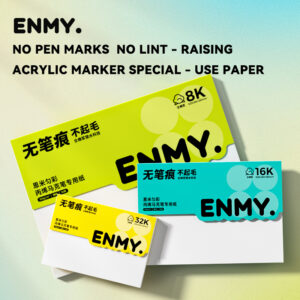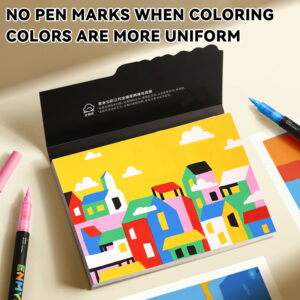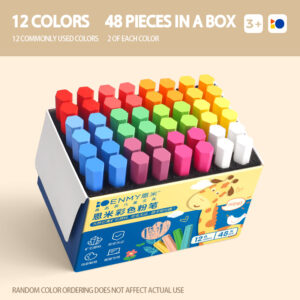Paper, an essential medium for the transmission of human civilization and information, is omnipresent in our daily lives, studies, and work. From the notebooks we write in, to the beautifully printed books and magazines, and the paper bags and boxes that package goods, different types of paper serve diverse functions. But do you understand the unique characteristics and differences behind these papers? Let’s embark on an in-depth exploration of common paper types.

The Fundamental Composition and Classification of Paper
Paper is primarily made from plant fibers (such as wood, reed, bamboo, cotton, and linen), fillers (like calcium carbonate, talcum powder), sizing agents (such as starch, synthetic adhesives), and coloring materials. These raw materials undergo a series of complex processes including pulping, refining, paper making, and finishing. Based on their uses, manufacturing processes, and properties, papers can be broadly categorized into four main types: cultural paper, packaging paper, household paper, and specialty paper.
Cultural Paper: Guardians of Knowledge Dissemination
Cultural paper is the type we encounter most frequently in daily life, mainly used for cultural dissemination and information recording, such as in books, newspapers, documents, and office printing.
- Newsprint: Also known as white newspaper, it’s mainly made from mechanical wood pulp, which keeps the cost low. Characterized by soft texture and strong ink absorption, it’s suitable for high-speed rotary printing of newspapers. However, newsprint has poor durability, prone to yellowing and brittleness, making it unsuitable for long-term preservation. For example, daily newspapers are usually printed on newsprint, enabling mass production to meet the demand for timeliness.
- Offset Paper: Manufactured from bleached chemical wood pulp or a mixture of wood pulp and cotton pulp, it goes through sizing and filling treatments, resulting in a smooth surface and even ink absorption. Widely used for printing books, magazines, and promotional posters, it comes in different grades like special grade, first grade, and second grade, with a weight ranging from 60 to 150 grams per square meter. Higher gram weights indicate thicker paper. Literary books and fashion magazines commonly use offset paper, presenting text and images clearly.
- Coated Paper: A layer of white coating is applied to the base paper, followed by supercalendering, creating a smooth, mirror – like surface with high whiteness and gloss. It’s divided into single – sided and double – sided coated paper, ideal for color printing. It can vividly display rich colors and fine details, often used for printing high – end brochures, product packaging, and calendars. High – end cosmetic packaging boxes and photography albums printed on coated paper can highlight the product’s texture and visual beauty.
- Writing Paper: Made from bleached chemical wood pulp or straw pulp, it has a dense texture, smooth writing experience, and certain water resistance to prevent ink bleeding. Commonly used for making exercise books, diaries, and notepads, it usually weighs between 50 – 80 grams per square meter, and comes in white or beige. Beige writing paper can relieve visual fatigue, and is often used for students’ exercise books.
- Copy Paper: With uniform thickness, good stiffness, and strength, it has excellent adaptability to electrostatic copying, reducing paper jams. Its high whiteness ensures clear text and image presentation, suitable for all types of copiers and printers. It’s a staple in office settings, commonly available in 70 and 80 grams per square meter for daily document printing and copying.
Packaging Paper: The Protective Shields for Goods
Packaging paper is mainly used for product packaging and protection, requiring certain strength, toughness, and moisture resistance.
- Kraft Paper: Made from sulfate wood pulp, it’s named for its color resembling cowhide. It has high tensile and tear strength, good toughness, and wear resistance. Used for making paper bags, cartons, and paper ropes, it’s widely applied in express packaging and industrial product packaging. For instance, many express delivery bags and outer packaging cartons for large appliances are made of kraft paper. It’s also popular in handicrafts for its rustic charm.
- Corrugated Paper: Composed of liner paper and corrugated medium paper (shaped like waves by corrugating rolls), it’s classified into different flute types like A, B, C, and E, each with varying compressive strength and cushioning properties. Lightweight yet strong, it provides excellent shock absorption, making it the primary material for cartons and boxes, playing a crucial role in logistics and product packaging. The cartons we receive from online shopping are mostly made of corrugated paper.
- White Cardboard: Made from 100% bleached chemical wood pulp and sized two or three times, it’s sturdy, thick, smooth, and highly white, with good bursting strength and stiffness. Used for making business cards, postcards, price tags, and high – end cartons, it can enhance the product’s grade, like brand clothing price tags and gift boxes.
- Test Liner: Mainly made from mixed waste paper and de – inked pulp, it’s cost – effective, with certain compressive and folding strength. It’s one of the main materials for shipping cartons, often used in combination with corrugated paper to enhance the box’s strength and load – bearing capacity.
Household Paper: Gentle Companions in Daily Life
Household paper is closely related to our daily life, emphasizing softness, absorbency, and hygiene.
- Toilet Paper: Made from natural wood pulp, bamboo pulp, or straw pulp, it’s soft, highly absorbent, and has good wet strength, mainly for hygiene purposes. Available in single – layer or multi – layer, it can also be processed with added fragrances or bactericides. The roll and tissue paper we use in the bathroom belong to this category.
- Facial Tissue: Similar in raw materials to toilet paper but with higher production standards, it requires softness, no fluorescent whitening agents, and stricter hygiene indicators, suitable for direct skin contact. Used for wiping the face and hands, it comes in various forms like pull – out and boxed tissues, commonly used as napkins in restaurants.
- Kitchen Paper: Focuses on strong water and oil absorption, capable of quickly absorbing moisture and grease. It can be used for wiping kitchen countertops, tableware, absorbing moisture from ingredients, or as a lining paper for grilling and baking. Some kitchen papers are added with antibacterial components to enhance cleaning effects.
Specialty Paper: The Artistic Wizards of Infinite Creativity
Specialty paper has unique uses, manufacturing processes, or properties, often applied in artistic creation, high – end printing, and gift packaging, showcasing distinctive textures and styles.
- Embossed Paper: Various textures or patterns, such as cloth, leather, or marble patterns, are created on the paper surface through embossing or printing processes, adding an artistic touch and depth to works. Commonly used for book covers, invitations, greeting cards, and art albums. For example, wedding invitations made of embossed paper can enhance the elegance and uniqueness.
- Art Paper: Produced with special raw materials and processes, it features rich colors, unique textures, and surface effects, like cotton paper, rice paper, and Yunlong paper. Used for calligraphy, painting, ancient book restoration, and high – end art printing, it can achieve artistic effects beyond ordinary papers. Rice paper, for instance, is ideal for traditional Chinese calligraphy and painting due to its excellent ink – spreading and layering properties.
- Security Paper: Special anti – counterfeiting elements such as watermarks, security threads, and fluorescent fibers are added during the manufacturing process. Used for making currencies, bills, and certificates to prevent forgery. For example, the watermarks and security threads in banknotes ensure their authenticity.
- Thermal Paper: Coated with a thermal – sensitive coating on regular paper, it changes color through a chemical reaction when heated, enabling ink – free printing. Used for supermarket receipts, fax papers, and POS machine printouts, it’s fast and cost – effective but has a short shelf life, prone to fading under light and high temperatures.
Tips for Paper Selection and Usage
- Clarify Your Needs: Choose the appropriate paper type according to the actual usage scenario. For writing and printing, prioritize writing paper and copy paper; for packaging, opt for kraft paper and corrugated paper; for daily cleaning, select toilet paper and facial tissue.
- Check Paper Specifications: Pay attention to parameters like gram weight, whiteness, smoothness, and stiffness. Gram weight affects thickness and strength, whiteness impacts visual effects, smoothness influences printing and writing quality, and stiffness determines the paper’s shape stability.
- Inspect Paper Quality: Evaluate paper quality by observing color uniformity, checking for spots and impurities, feeling the texture, and testing absorbency and toughness.
- Prioritize Environmental Protection and Safety: Prefer papers made from renewable raw materials and produced with pollution – free processes to reduce environmental impact. For household papers that come into contact with skin or food, ensure they meet relevant hygiene standards and avoid products with harmful chemicals.
Although paper may seem ordinary, it encompasses rich knowledge and diverse characteristics. Understanding the features and applications of different paper types not only helps us make more suitable choices in daily life but also enables us to maximize their value. Whether for writing, packaging, or artistic creation, each type of paper plays an indispensable role in its respective field, jointly forming the colorful world of paper.





